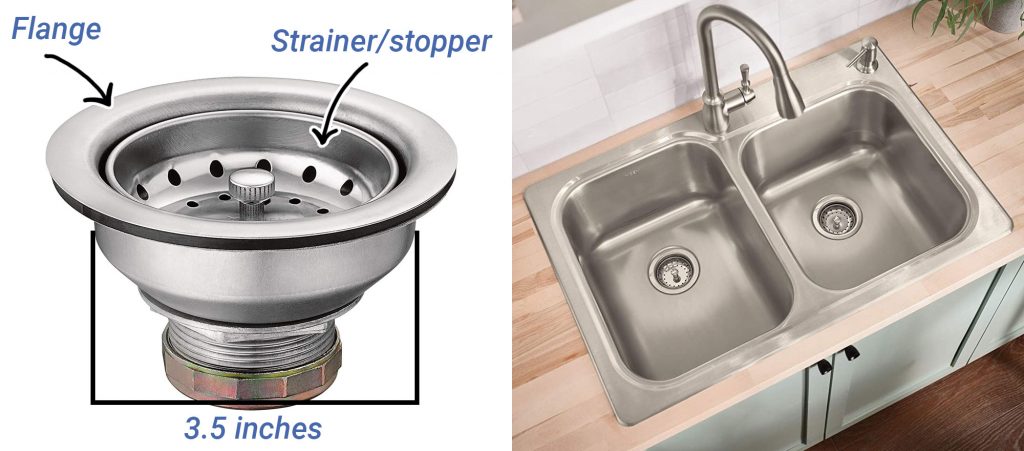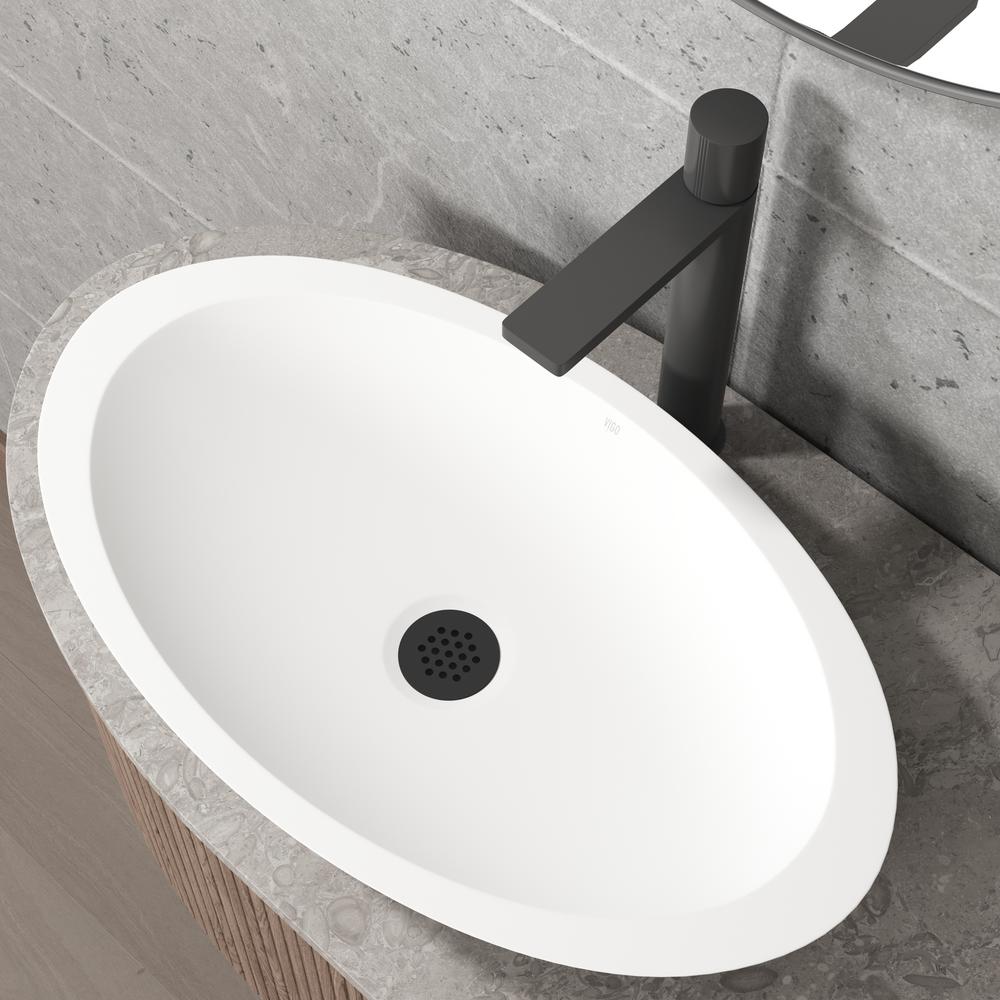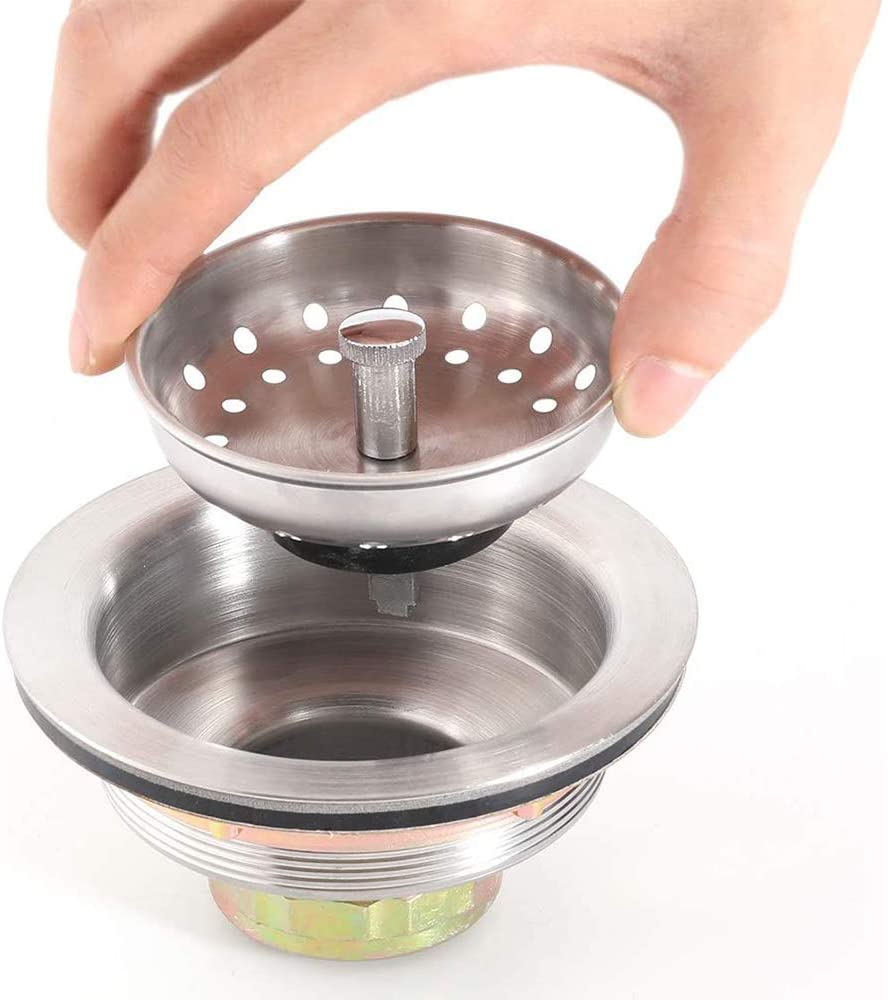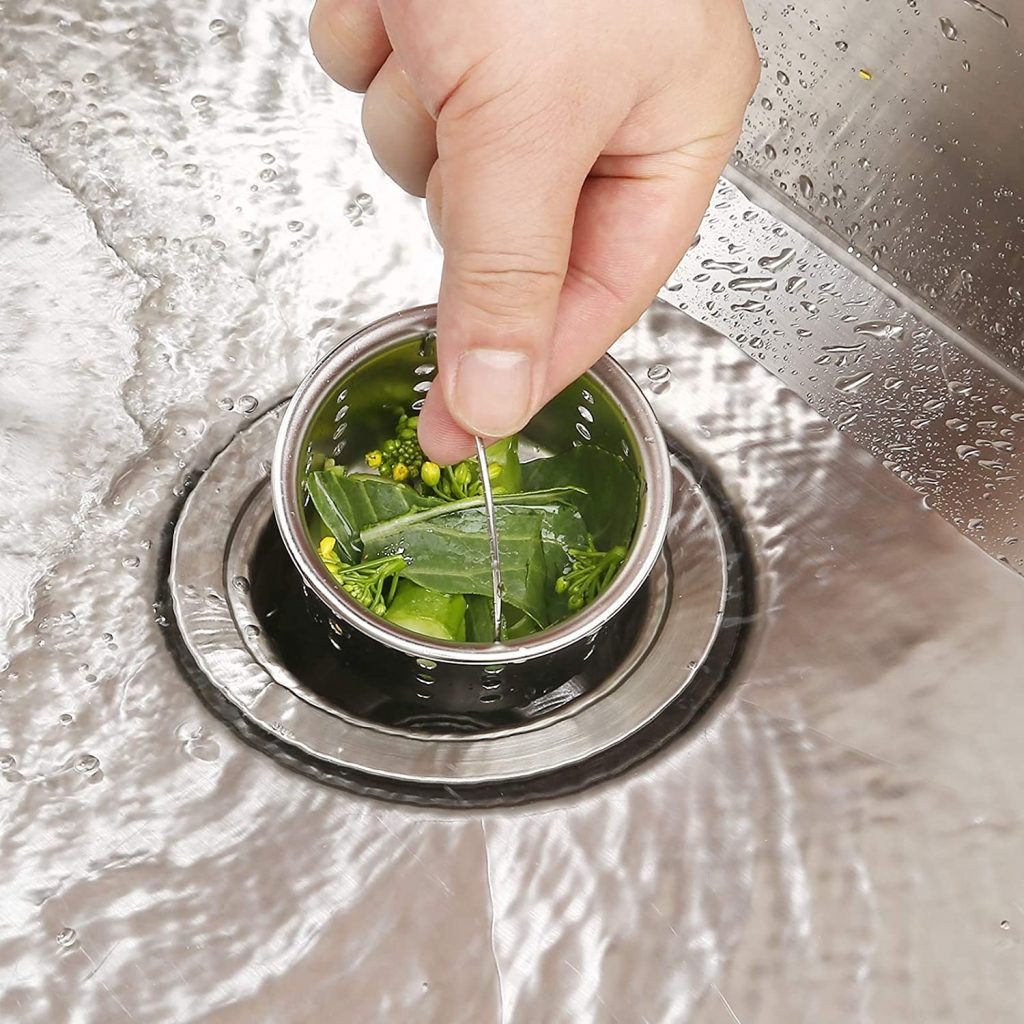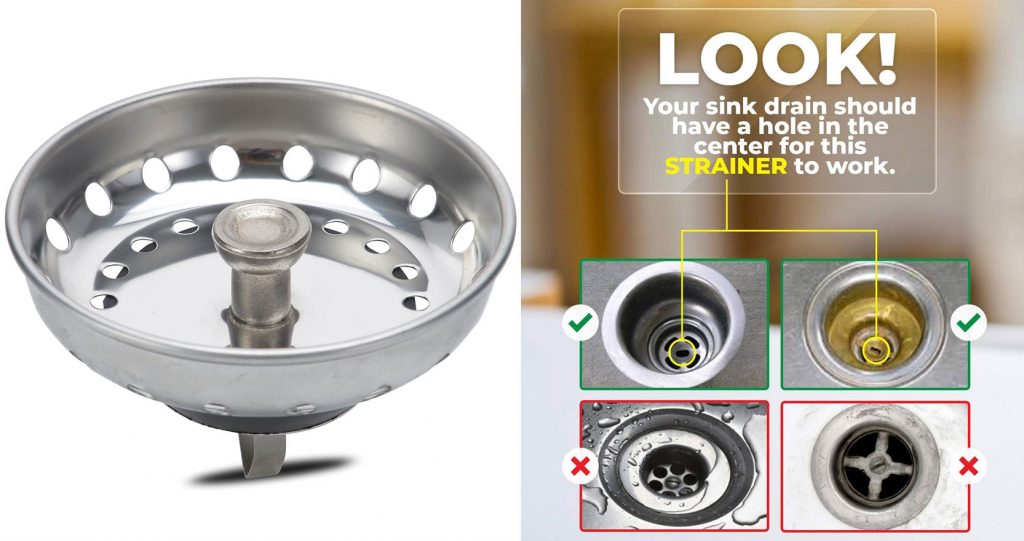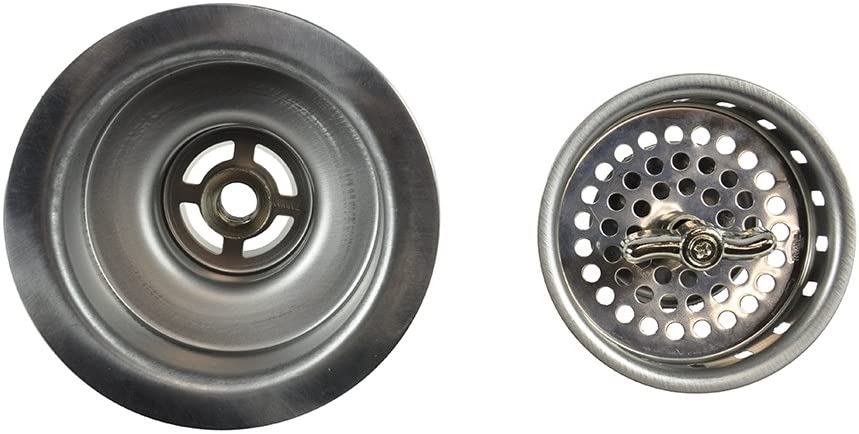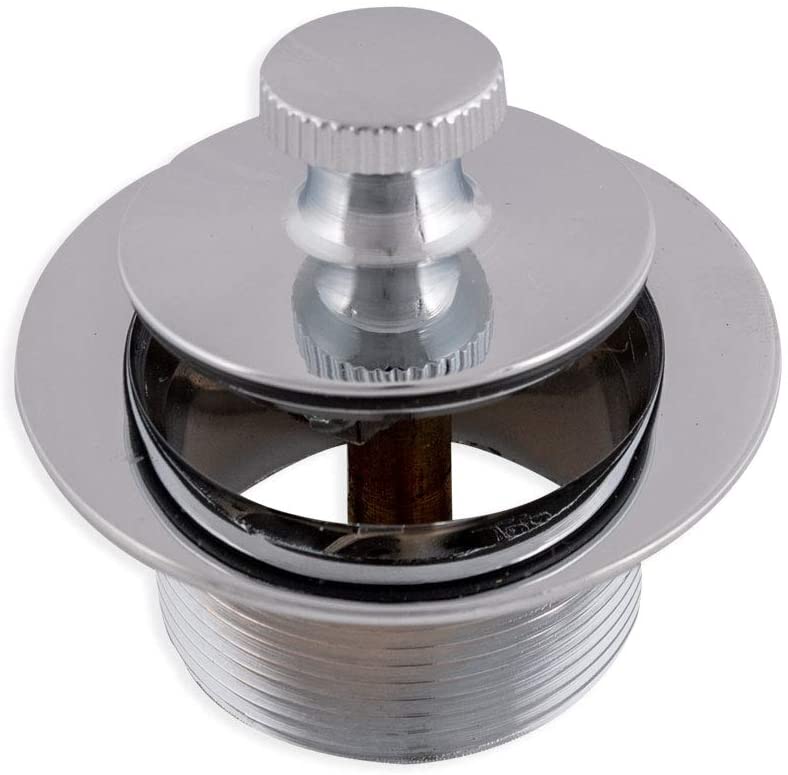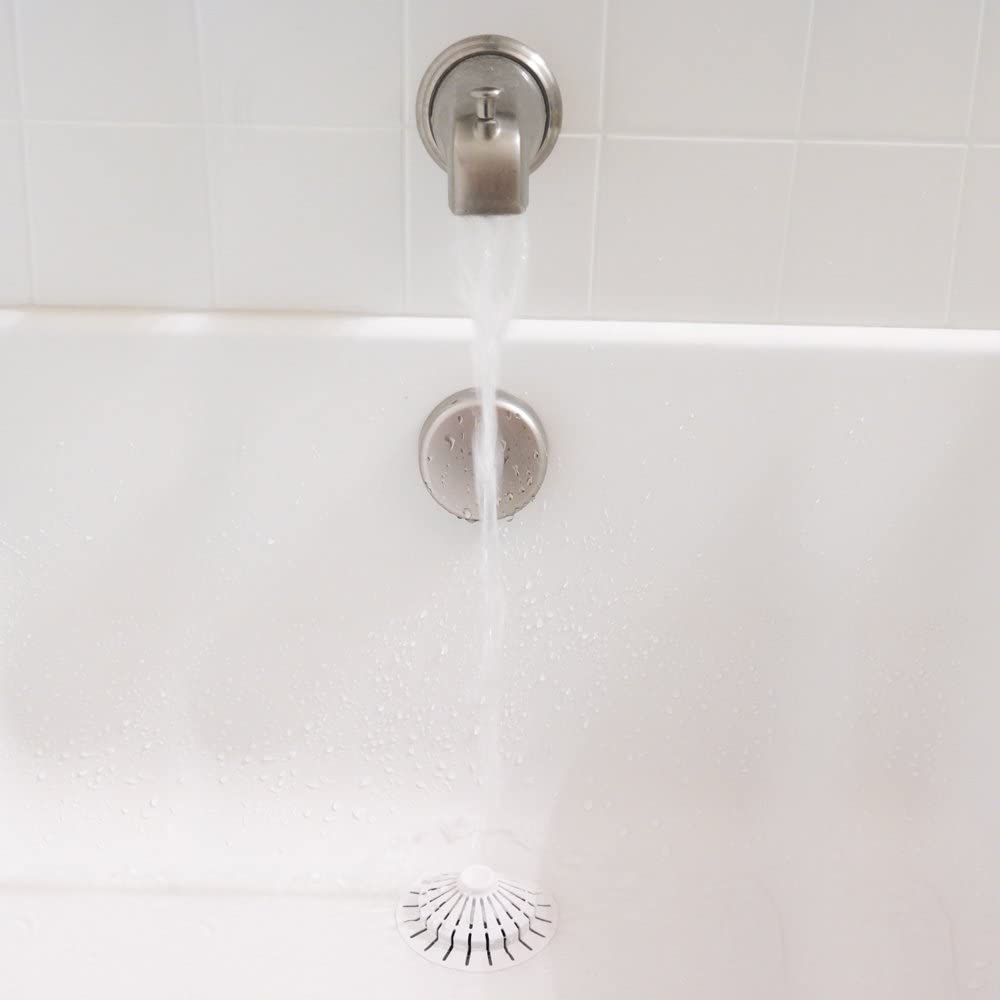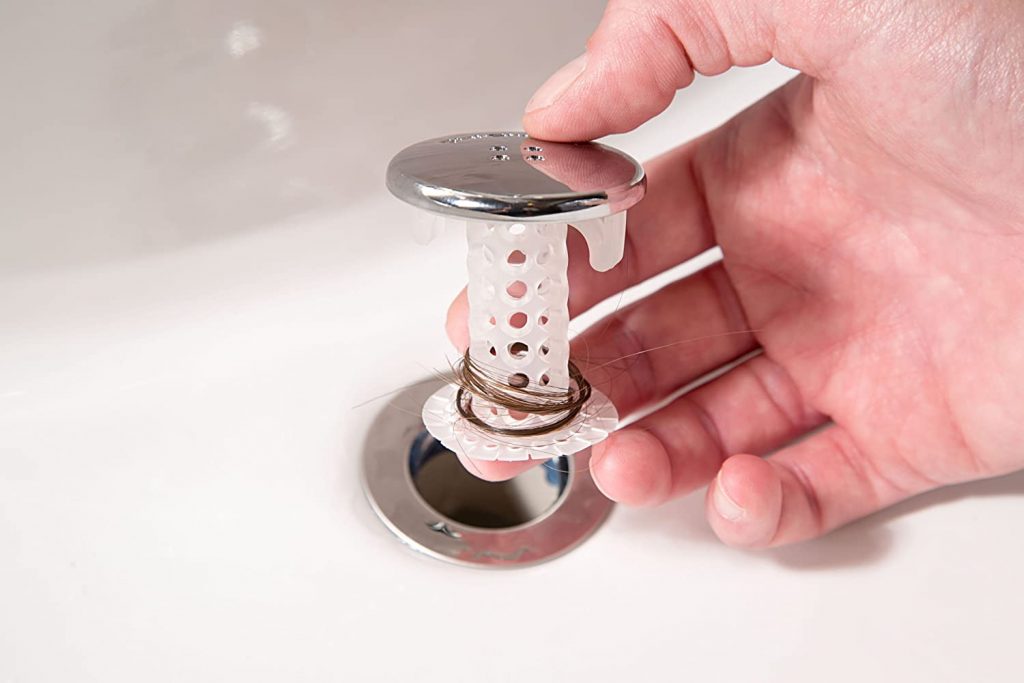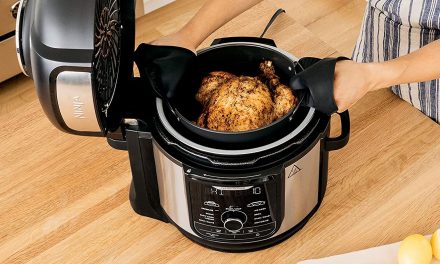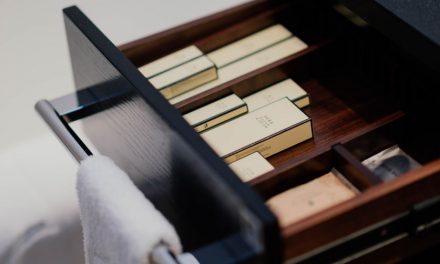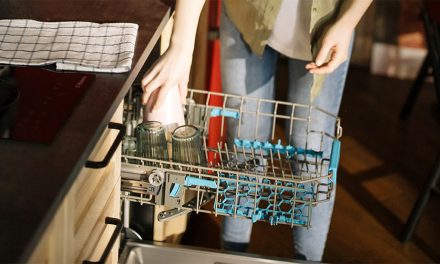Kitchens and bathrooms have different drainage and drain protection needs. In the kitchen, you want to protect your drainage from large food particles with a good strainer, perhaps even in conjunction with a garbage disposal. In the bathroom, your biggest concern is hair shedding, especially if you also occasionally wash thick lotions or cosmetics down the drain.
These days, many kitchen sinks come with a full drain setup and have a strainer by default, meaning you don’t have to think about these parts of the sink at all. Bathroom sinks tend not to come with drain setups, but straining is usually less important there, and there aren’t as many drain types. Shower drains are more varied in appearance, but tend to function very similarly beneath cosmetic differences.
Wherever you’re looking to improve or replace a strainer, stopper, or drain, there’s actually a lot to consider. In this article, we’ll talk about different sizes of sink drains, go over the types of kitchen sink strainers that exist, and then take a look at what stoppers and drain protection are available for your bathroom sink and shower.
Are there different size sink drains?
Yes! First of all, kitchen and bathroom drains are not the same size. Moreover, there is no universal sizing for either type of drain, drain hole, pipes, or accessories, but there are common sizes.
Whatever room or basin you’re buying a drain, stopper, or strainer for, understand there are two measurements to consider: the drain hole and connecting pipe size (outlet) and the size of any top collar or lip on the drain assembly (flange). There is some wiggle room with measurements because of how assembly pieces fit into each other. Putting most of these pieces together is like putting a bowl into a slightly larger bowl—as long as they’re about the right size, they’ll still fit if you follow installation directions.
For nearly all kitchen sinks, the standard drain hole size is 3.5 inches, though some larger setups exist. Bar sinks have smaller drain holes sized between 1.875 (1 7/8) inches and 2.25 inches, though, again, some are larger. Sometimes strainers for bar sinks are sold under the term junior.
If you have a garbage disposal, the disposal itself replaced any previous, standard drain assembly. To use a strainer with your disposal, you’ll want one with a wide (more than 3.75 inch) flange that sits atop the disposal drain or a strainer specifically compatible with your disposal’s flange. Garbage disposal specific strainers and stoppers are more likely to be straight-sided and can be deeper for thicker sinks, such as fireclay sinks.
While some strainers are designed to fit with specific kitchen drain assemblies, many strainers will fit a variety of drains. Check dimension ranges (if they’re available) to be sure, but if your drain hole is around 3.5 inches, a standard strainer assembly is likely to fit. If you’re really uncertain, simply find a strainer that has a large flange of its own and can, therefore, fully cover your drain.
As for installing stoppers or strainers / hair traps in bathrooms, expect it to be a little trickier. Bathroom drain sizes are slightly less universal than those found in the kitchen, and their existing drain assemblies may be more complex.
While most bathroom sink drain holes measure 1.25 inches in diameter, drain holes of 1.5 inches and 1.625 (1 5/8) inches are also common.
Shower drain holes tend to measure 1.5 to 3 inches in diameter, but the flange on shower drains varies a lot according to your tub or shower’s design. You can find large, square floor drains, as well as long, linear drains. Despite these varied designs, most still connect to 2- or 3-inch drain pipes beneath the surface.
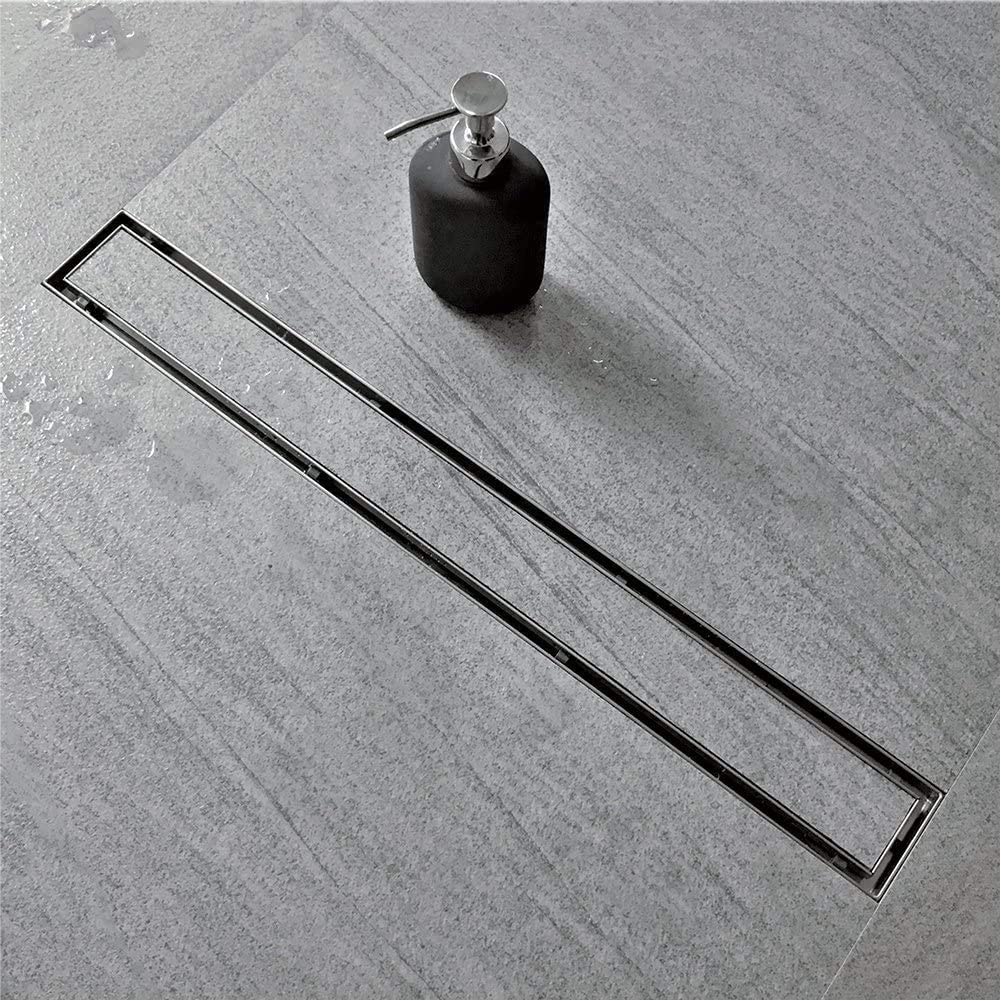
See Neodrain’s 24-inch linear shower drain with tile insert. Despite its size, it still connects to a 2-inch outlet.
Types of sink strainers for the kitchen
All kitchen sink strainers are basket strainers and “double cup” strainers. A separate “cup,” the basket, fits into the body of your drain, the other so-called “cup.” The basket catches food particles and other debris, preventing the waste from slipping down the drain or reaching your garbage disposal. Meanwhile, the holes in the basket also allow for the free passage of water, so long as the basket doesn’t become overfilled. You simply remove the basket and empty its debris in the trash, as needed.
This helps protect your pipes and is better than a garbage disposal if your local water treatment system doesn’t use collected food waste to generate energy. As a bonus, many basket strainers also function as stoppers.
So if all sink strainers are basket strainers and double cup strainers, are all sink strainers the same? No! Where basket strainers differ is in their design and materials. You’ll see kitchen sink strainers and stoppers described in a number of different ways by manufacturers and marketers. Your most reliable way of differentiating between them is by looking at pictures and reading about how they work.
Silicone strainers
If you don’t need or want to change your drain’s assembly, silicone sink strainers are the type of strainer that is most likely to fit the drain you already have installed. These have a wide flange (outer lip), typically made of silicone, plastic, or stainless steel, which sits over your drain.
With some, you simply set them atop your drain and they work as small, open baskets. With others, you push down on a post in the center of the strainer, and the flexible silicone dips inward, creating a basket strainer on the fly.
These are great options for most homes. They won’t scratch your sink, they’re dishwasher safe for thorough cleaning, and they’re easy and affordable (<$10) to replace when they wear out. They do have a couple of downsides, however.
The first is that silicone strainers come with no plug, so if you're in search of both a strainer and a plug, you'll need to buy a stopper separately. The second downside is that pulling post versions of these strainers free of your drain can be messy if the post pops the flexible basket up during removal.
Still, for most households that aren’t seeking to fully replace a drain, silicone strainers are great with the use or purchase of a separate plug.
Mesh kitchen sink strainers (slop basket filter traps)
Like silicone strainers, stainless steel mesh strainers are meant to be simple and come as closely as possible to a standard size strainer. You slap them atop your existing drain, and you’re good to go. These have no posts whatsoever. They’re just little baskets.
Also like silicone strainers, metal mesh strainers come with no plug and are dishwasher safe. One advantage to them over silicone is they’re often sold in sets of two or more. If one gets gross and grimy, merely pop it in the dishwasher and use the other one instead.
Post-style basket strainers (fixed post strainers, stationary post strainers)
Post-style basket strainers have a plug attached just beneath their basket. An accessible post in the middle of their basket allows you to use and release this plug, meaning these basket strainers work as both a strainer and a stopper.
With these, you pull up on the post to use the strainer alone and let water flow freely, or you push down on the post to wedge a stopper in the way of the drain pipe, thus plugging your sink. Some post models you twist/untwist instead of push/pull.
You’ll sometimes see these called fixed post or stationary post basket strainers. These names are a little misleading since their posts are movable. Their post will function as described above.
Of all the strainer types, this is the type of strainer style you’re most likely to see come with a new drain assembly.
Large basket strainers
Some basket strainers are designed to hold more debris at a time, allowing you to go longer between clearing sessions. They really are baskets.
Deep basket strainers may or may not be right for you. While it’s nice not to have to clear out a strainer as frequently, these can fill up, making it harder for water to flow through them freely—and thus sort of defeating their purpose, as you’ll be forced to clear them out sooner, anyway.
A separate stopper is included with large basket strainers. It simply sits atop the strainer basket, plugging the drain.
Spring clip strainers
At first glance, spring clip sink strainers look just like any other post-style basket strainer. And it’s true, they have a basket, and they have a post. Push down or pull up to use or release the plug. What puts them in a separate category is how that post works—or rather, what it does or doesn’t fit.
Some sink drains—especially older sink drains—come with basic straining as part of their design. They have narrow openings through which water can pass, but larger debris cannot. This can be great when you don’t have a garbage disposal, but they are difficult and gross to clean. It’s natural to want a strainer for them.
Most of these sink drains have a narrow, central keyhole-like opening. This is where spring-clip strainers “clip” into place. In other words, you have a drain that either does or doesn’t work with a spring clip strainer.
Another major difference? Unlike in the case of more modern post-style basket strainers, you’re not likely to see many full drain assemblies for this style of drain. They’ve fallen out of fashion.
Spin-lock strainers (twist lock strainers)
Similar to spring clip strainers, spin-lock, or spin and lock, strainers have to be used with the right kind of sink drain. Unlike sink drains that support a spring clip with their narrow, keyhole-like opening, sink drains that support a spin-lock strainer have a round opening. Their post features an S-curve twist key that allows you to use and release the plug.
It’s easy to find spin-lock strainers, but not so easy to find the drain assemblies that support them. Like those for clip strainers, these types of drains are no longer popular.
Types of drain stoppers for the bathroom
Bathroom sinks and tubs tend to have simple plug/unplug drain setups, though some also come with built-in or optional strainer mechanisms. In bathroom sinks, you’re most likely to see grid drains and pop-up drains. The former style has a cover to plug it (or no plug at all), while the latter is pressed down on to activate or release its plug. Some pop-up drains optionally have a lift rod that runs up the back of the bathroom sink and can be pulled up or down like a plunger to activate and release the drain plug.
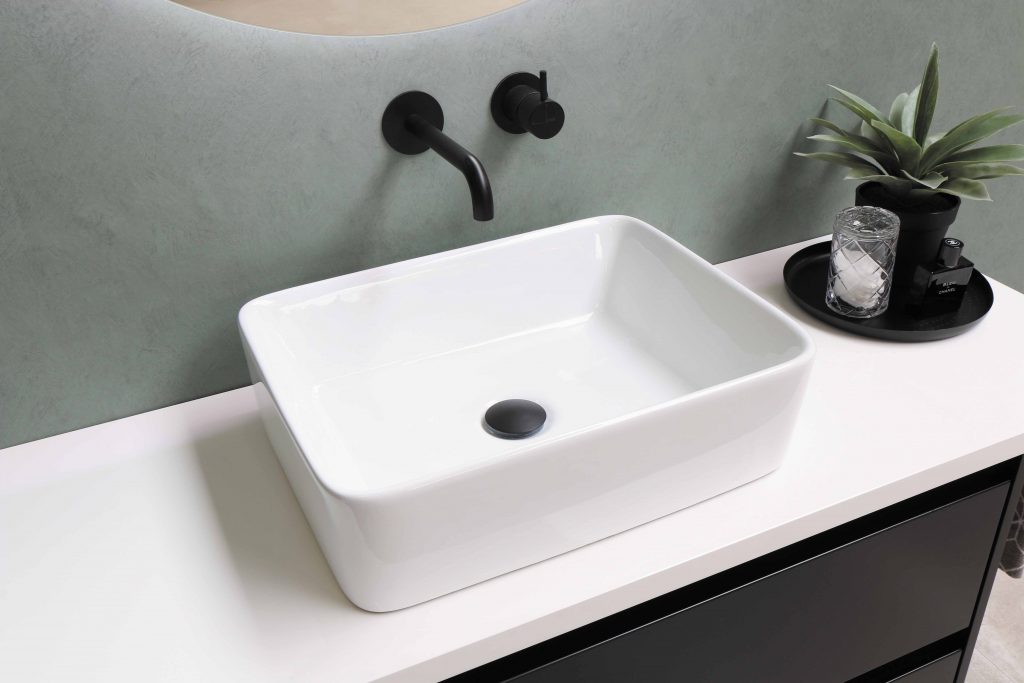
This bathroom sink has a pop-up drain without a lift rod. Public domain photo by Sanibel BV from Unsplash.
Tub drains are most likely to use grid-style, pop-up (sometimes called touch-toe or toe tap in this context), or lift and turn designs. Lift and turn drains are the most common. They work like spin-lock kitchen sink strainer/stoppers. Twist counterclockwise to lift the stopper, twist clockwise to plug it into place.
While some bathroom sink and tub stoppers include built-in or optional strainer mechanisms, most do not. This means hair easily slips into these drains, which can cause clogs, especially when coupled with thick and sticky conditions, toothpastes, and cosmetics. You can also easily lose jewelry in un-strained bathroom drains. If you have the option to install a drain strainer or protector on your bathroom drains, definitely consider it.
Types of bathroom strainers
Some of the sink strainers available for bathroom sinks and tubs look and work very similarly to the strainers available for the kitchen, though others function quite differently. In general bathroom drain protection is simple: you set the strainer atop the drain and no more is required of you. Many strainers designed for the home bathroom also work well in RVs and in some utility room wash basins (depending on drain and strainer size).
Suction cup hair catchers
Want to keep your drain clog-free, but not sure of its size or don’t want to interfere with an existing plug mechanism? Then you might consider silicone suction cup strainers.
Unlike the other bathroom strainers on the market, these don’t fit into your drain at all. They sit over it and suction cup around its edge. Easy to install and affordable to replace, these can be a great option for renters.
Mesh bathroom sink and tub strainers
Most stainless steel mesh strainer baskets made for the bathroom sink or tub basin fit within the common bathroom drain sizes. Their outer lip, or flange, is large enough to sit in place around the edge of your drain’s flange.
While effective, affordable, and easy to clean, the major downside to mesh strainers for the bathroom is they don’t play nicely with existing drain stoppers found in most bathrooms. For example, to use them with a pop-up bathroom sink drain, you’d need to remove the stopper entirely and replace it with the mesh basket strainer. You can always replace this with a simpler stopper, but if you’re looking for something to work with an existing drain with a stopper mechanism, mesh basket strainers probably aren’t the way to go.
SinkShrooms and TubShrooms
Similar to mesh strainers for the bathroom, SinkShrooms and TubShrooms are made to replace stoppers, so if you use the stopper in your pop-up or lift and turn drains frequently, they may not be a good fit for your bathroom. That said, SinkShroom and TubShroom strainers are one of those as-seen-on-TV inventions that may actually be as revolutionary as the manufacturer claims.
Shroom products have the appearance of a normal drain top and fit the most common sizes of bathroom sink and tub drain holes. They look much nicer than mesh strainers for the bathroom. Beneath this unassuming cover, however, lies a lengthy strainer basket that is perfect for catching hair before it can clog your drain.
As they may replace an existing plug mechanism, you may also want to purchase one of their separate stoppers.
What do I need to replace a sink drain?
As you can see, you don’t need to replace your sink’s drain assembly to protect your drainage from food waste, hair, or other debris. However, if your drain has got to go, it is possible to DIY, provided you are somewhat familiar with basic home repairs.
For a kitchen sink, you’ll need the new drain/strainer of your choice, a sink wrench, a drain wrench, and plumber’s putty.
Watch the video below to see if you’re up to this DIY home repair challenge!
If you want to learn how to install a pop-up bathroom sink drain instead, check out this video.
What is the best sink strainer?
Don’t want to think too hard about it? We’ve got you covered.
-
If you rent your home or apartment, don’t interfere with existing plumbing unless you know what you’re doing and your landlord has said it’s all right (in writing!).
- For the kitchen, buy a 2-pack stainless steel mesh strainer set, like the American-made Solid brand’s set. It’s likely to fit your kitchen sink. Prefer silicone? You can’t beat OXO’s strainer, but you may want to buy two so you have one in reserve for when the other’s being washed.
- For the bathroom, get Danco’s suction cup strainer.
-
If you own your home and don’t mind a little DIY, consider tailoring your drains more to your particular needs.
- For the kitchen, consider a well-rated post-style basket strainer. Just remember that if you have a garbage disposal, you’ll probably want to look for a strainer that works with your disposal brand/model.
- For the bathroom, consider TubShroom products if straining is important to you. There are some for both common bathroom sink and tub sizes. Just remember you’ll need separate stroppers.

